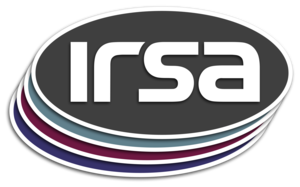The SAGE-SMC pro ject is a Cycle 4 legacy program on the Spitzer Space Telescope, entitled, SAGE-SMC: Surveying the Agents of Galaxy Evolution in the Tidally-Disrupted, Low-Metallicity Small Magellanic Cloud, with Karl Gordon (STScI) as the PI. The project overview and initial results are described in a paper by Gordon et al. (2010, in prep). The SMC was mapped at two different epochs dubbed Epochs 1 and 2 separated by 3 (IRAC) and 9 (MIPS) months, as this provides a 90-degree roll angle in the orientation of the detectors, which optimally removes the striping artifacts in MIPS and artifacts along columns and rows in the IRAC image data. In addition, these two epochs are useful constraints of source variability expected for evolved stars and some young stellar ob jects (YSOs). The IRAC and MIPS observations from the S3MC pathfinder survey of the inner 3 sq. deg. of the SMC (PI: Bolatto, referred to as Epoch 0) have been reduced using the same software.
In comparison to the catalog, the archive has more source fluxes (fewer nulled wavelengths) and some more sources but these additions have more uncertainty associated with them. For the catalog, a source must be detected in at least 60% of the observations at that wavelength, at least 32% of the observations in an adjacent band (the confirming band), and the S/N must be greater than [5, 5, 5, 7] for IRAC bands [3.6um], [4.5um], [5.8um] and [8.0um]. The 2MASS K_s band is counted as a detection. For a typical source, extracted from 2x12 sec frametime images, the minimum detection criterion amounts to being detected twice in one band (usually band 1 or 2) and once in an adjacent band (sometimes referred to as the 2+1 criterion). For the catalog, sources with neighbors within a 2" radius are excluded (culled). For the archive, sources within a 0.5" are excluded. For more details, see Section 3.3 of the SAGE-SMC Data Delivery Document.
This dataset or service is made available by the Infrared Science Archive (IRSA) at IPAC, which is operated by the California Institute of Technology under contract with the National Aeronautics and Space Administration.




